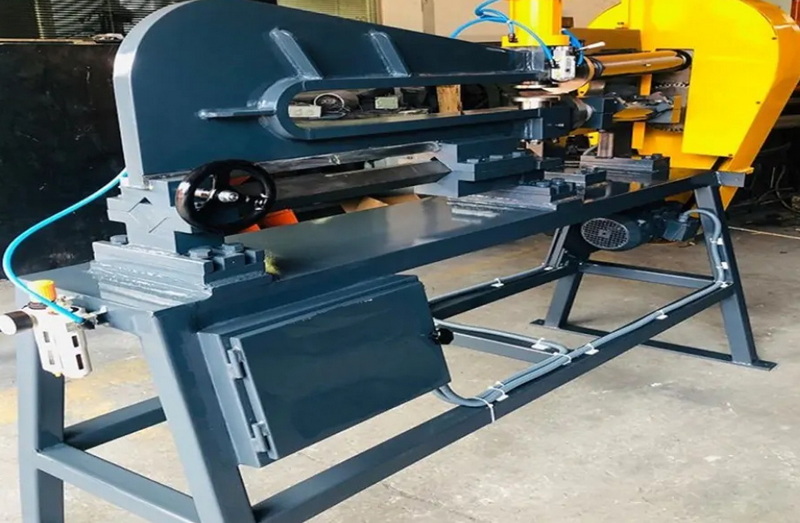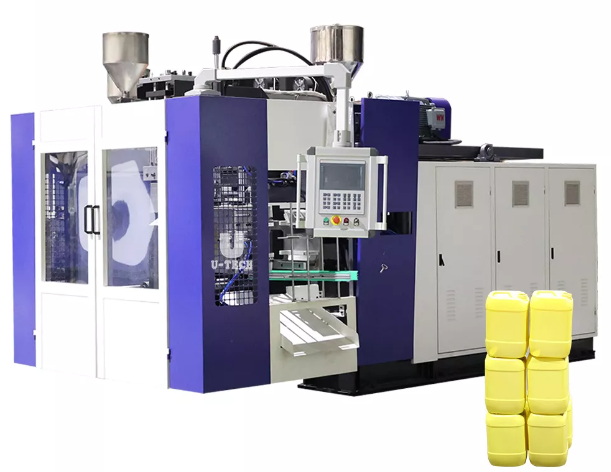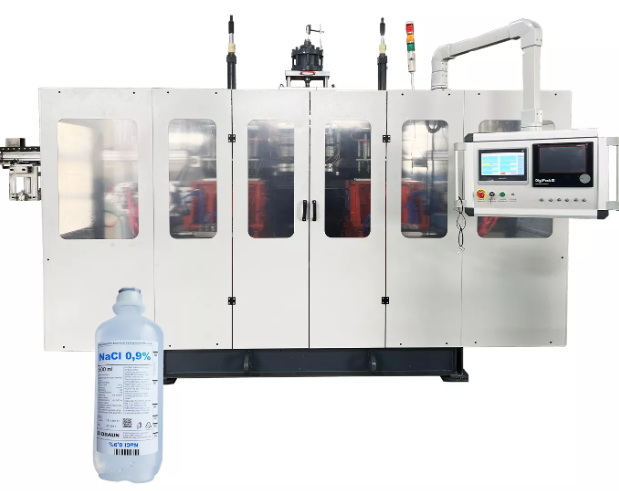Content Menu
● Understanding Extrusion LGV Automatic Vehicles
● How Extrusion LGVs Work
>> Laser Navigation System
>> Operational Workflow
● Key Components of Extrusion LGVs
● Applications in Extrusion Manufacturing
● Advantages Over Traditional Methods
● Future Trends
● Implementation Challenges and Solutions
● Real-World Applications and Success Stories
● Technological Innovations
● Conclusion
● FAQ
>> 1. How does an extrusion LGV differ from a standard AGV?
>> 2. What industries benefit most from extrusion LGVs?
>> 3. How are extrusion LGVs maintained?
>> 4. Can extrusion LGVs operate in high-temperature environments?
>> 5. What is the ROI for implementing extrusion LGVs?
Extrusion LGV (Laser Guided Vehicle) automatic vehicles represent a cutting-edge innovation in industrial automation, combining precision laser navigation with robust material handling capabilities. Designed for seamless integration into extrusion manufacturing lines, these vehicles optimize workflows, reduce operational costs, and enhance safety. This article explores their design, functionality, applications, and future trends, supported by technical insights and real-world examples.

Understanding Extrusion LGV Automatic Vehicles
An extrusion LGV automatic vehicle is a specialized type of laser-guided vehicle tailored for extrusion processes, where materials like plastics, metals, or composites are shaped into continuous profiles. Unlike traditional AGVs (Automated Guided Vehicles), LGVs use 360° laser triangulation to navigate dynamically within complex environments, such as factories with high-density storage or narrow pathways.
Key characteristics include:
- Laser navigation: Reflectors mounted in the facility enable real-time positioning updates (30–40 times per second).
- Payload versatility: Capable of transporting raw materials, extruded products, or tooling.
- Integration with extrusion lines: Synchronized with extruders, cooling systems, and cutting machines for end-to-end automation.
How Extrusion LGVs Work
Laser Navigation System
The core of an extrusion LGV's functionality lies in its navigation:
1. Laser emission: A 2D LiDAR sensor emits a modulated laser beam in a 360° pattern.
2. Reflector interaction: The beam detects reflectors (targets) placed on walls, columns, or machinery. By measuring the time and angle of reflected light, the LGV calculates its X/Y coordinates relative to the environment.
3. Path correction: Software algorithms adjust the vehicle's route to avoid obstacles, ensuring collision-free movement even in crowded spaces.
Operational Workflow
1. Task assignment: A centralized control system (e.g., SM.I.LE80) dispatches the extrusion LGV to retrieve raw materials or deliver finished products.
2. Load handling: Forklifts, conveyors, or robotic arms transfer materials onto the LGV's platform.
3. Transportation: The vehicle follows pre-mapped paths, adjusting speed and trajectory based on real-time sensor data.
4. Data integration: Sensors capture operational metrics (e.g., throughput, battery status), feeding into analytics platforms for process optimization.

Key Components of Extrusion LGVs
| Component | Function |
| LiDAR sensor | Emits and detects laser beams for navigation. |
| Lithium battery | Provides 8–12 hours of operation with induction-based charging. |
| Proximity scanners | Detect obstacles (e.g., humans, machinery) within 360° for safe operation. |
| Control software | Manages route planning, fleet coordination, and ERP integration. |
Applications in Extrusion Manufacturing
Extrusion LGVs excel in:
- Raw material delivery: Transporting pellets, resins, or alloys to extruders.
- Product handling: Moving extruded profiles to cooling racks or CNC cutting stations.
- Tooling changeovers: Delivering dies or molds to production lines, minimizing downtime.
Case Study: A European plastics manufacturer reduced material handling costs by 40% after deploying extrusion LGVs from E80 Group, which synchronized with their extrusion and packaging lines. This integration allowed for real-time monitoring and adjustments, further enhancing efficiency.
Advantages Over Traditional Methods
1. Precision: Laser guidance ensures ±5 mm accuracy, critical for handling delicate extruded products.
2. Flexibility: Reflector-based paths are easily reconfigured for new production layouts.
3. Safety: Proximity scanners and emergency brakes prevent collisions (compliance with ISO 3691-4).
4. Cost efficiency: Reduced labor dependency and lower maintenance vs. conveyor systems.
Future Trends
1. AI integration: Predictive maintenance and adaptive routing using machine learning.
2. 5G connectivity: Real-time data exchange for multi-vehicle coordination in large facilities.
3. Sustainable design: Energy recovery systems and recyclable materials.
4. Collaborative Robotics: Integration with cobots for enhanced material handling and assembly tasks.
Implementation Challenges and Solutions
Implementing extrusion LGVs requires careful planning to address potential challenges:
- Infrastructure setup: Initial investment in reflectors and navigation systems.
- Training personnel: Educating staff on LGV operation and maintenance.
- Integration with existing systems: Ensuring compatibility with current machinery and software.
To overcome these challenges, manufacturers often engage in thorough feasibility studies and collaborate with experienced system integrators who can provide tailored solutions.
Real-World Applications and Success Stories
Several industries have seen significant benefits from adopting extrusion LGVs:
- Automotive: Enhanced supply chain efficiency by automating parts delivery.
- Aerospace: Improved precision in handling lightweight composite materials.
- Construction: Streamlined logistics for building materials like PVC pipes and profiles.
These success stories highlight the versatility and adaptability of extrusion LGVs across diverse manufacturing sectors.
Technological Innovations
Recent advancements in sensor technology and AI have further enhanced the capabilities of extrusion LGVs:
- Advanced sensors: Improved navigation accuracy and obstacle detection.
- AI-driven analytics: Predictive insights for optimizing production workflows and resource allocation.
- Autonomous charging: Vehicles can automatically recharge, reducing downtime and increasing operational hours.
Conclusion
Extrusion LGV automatic vehicles are revolutionizing manufacturing by merging laser precision with automated logistics. Their ability to adapt to dynamic environments, coupled with seamless ERP integration, makes them indispensable for modern extrusion facilities. As industries prioritize efficiency and sustainability, LGVs will play a pivotal role in shaping smart factories.

FAQ
1. How does an extrusion LGV differ from a standard AGV?
Extrusion LGVs use laser triangulation for navigation, while traditional AGVs often rely on magnetic tapes or wires. This allows LGVs to operate without physical path markers, enabling rapid reconfiguration.
2. What industries benefit most from extrusion LGVs?
Primary sectors include plastics, metals, and composite manufacturing, where continuous material handling and high precision are critical.
3. How are extrusion LGVs maintained?
Most models feature self-diagnostic systems and lithium batteries with induction charging, minimizing downtime. Regular reflector calibration ensures navigation accuracy.
4. Can extrusion LGVs operate in high-temperature environments?
Yes. Models like Cassioli's AGVs are designed for extreme conditions, including high heat near extruders.
5. What is the ROI for implementing extrusion LGVs?
Businesses typically achieve full ROI within 2–3 years through labor reduction, fewer product damages, and increased throughput.













